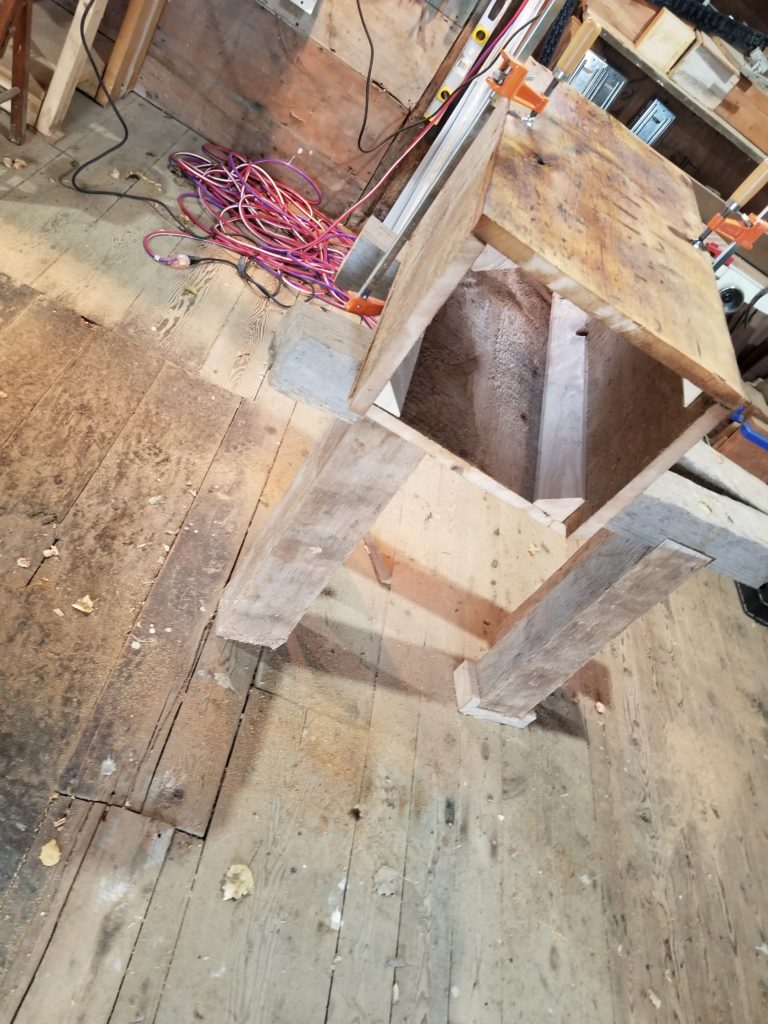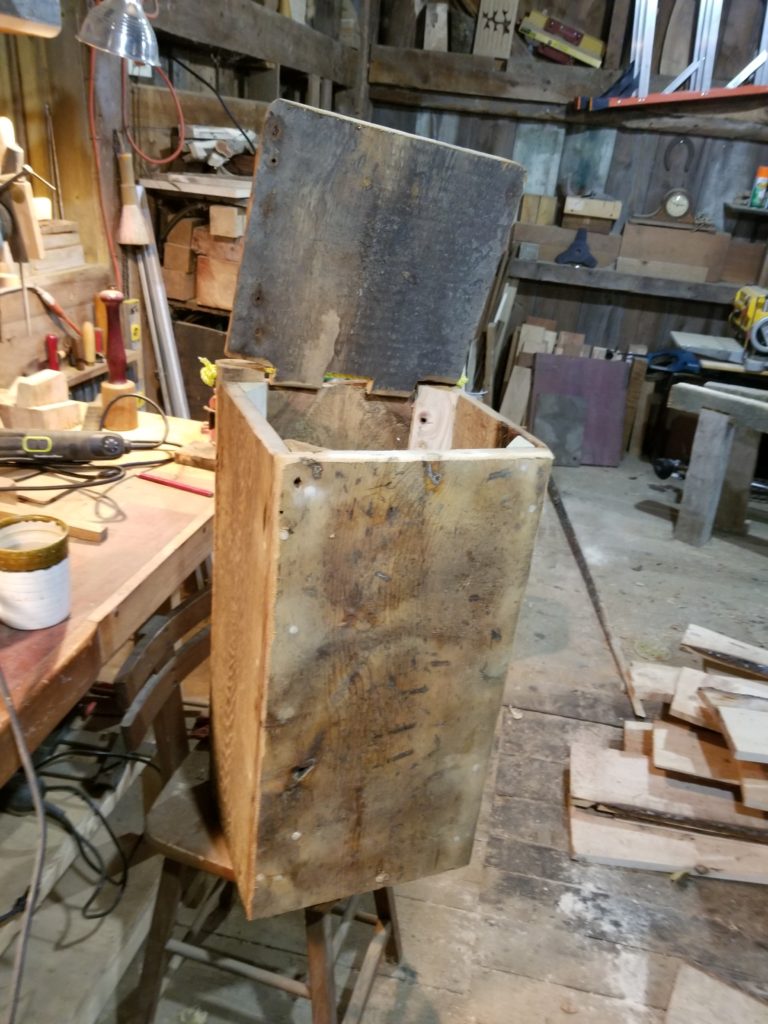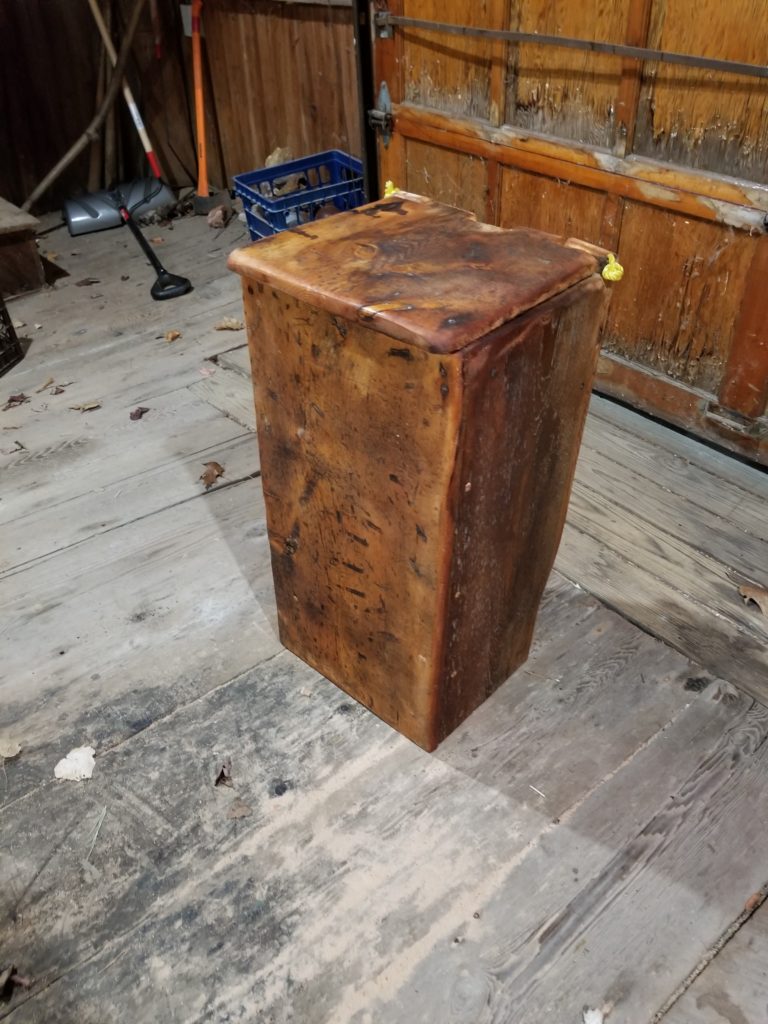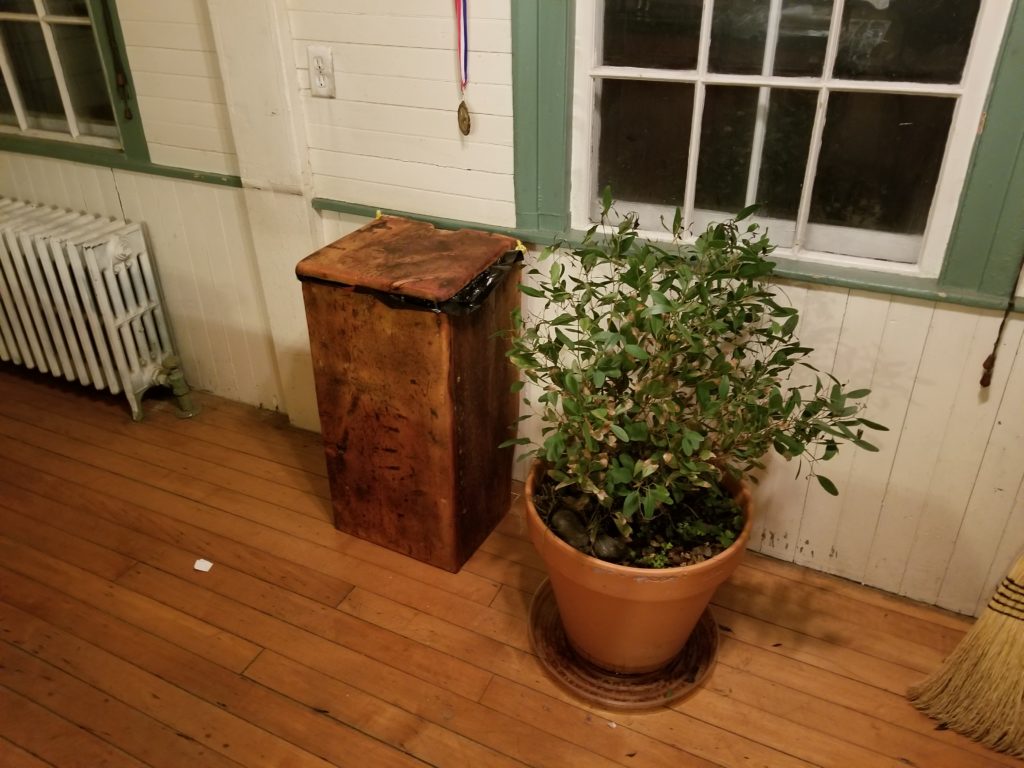A story will be told, probably here, about a local bridge of doom. This is not that story.

You see, the floor in the pantry had begun to fall in because the beams beneath it, all save the one pictured, had at least partially rotted. The floor was three layers of wide planks. Those planks cried out that they still had life, that they were not ready for the fire. Sometimes one must go with the flow (probably more often than is often understood). In the kitchen, the trash bag had been domiciling in a cardboard box. The stage was set.

Of course no nails, as has been my method of box making. I cut the the corner runners from some scrap, glued and doweled them into place. I measured not once. I swizzled and re-swizzled, dithered and dithyrambed. In no time at all, and with a very innovative hinge, Box 20 emerged.

Note the irregular placement of the dowels. Their angles are also divergent. This is so that any particular whack/injury cannot call forth a systemic failure. As much as any given dowel may wish to surrender to a given force, it’s brethren will disagree. This is strength by non-alignment. I prattle.

Thar she is, finished with the usual tung oil and limonene. Smells awesome, if you like that smell. Of note, you should be able to see, above, that the hinge is of rope.
At first I wanted to make a classic dowel hinge. This requires a little bit more planning than the flow state usually affords – also, the pride (amount they stick out) of the protrusions on the lid was insufficient to get the drill bit aligned with the line of the would be wooden hinge. Scratch, scratch, scratch… what if the hinge were … not a straight line. Unthinkable! Or not.
An additional benefit of such a hinge is that it’s relatively unbreakable. Whereas, if a person were to casually sit on said trash box, a dowel hinge might break and cause considerable consternation. Not so the go with the flow rope hinge. Simplicity, benefit, joy.

Righteously recycled, deployed.
